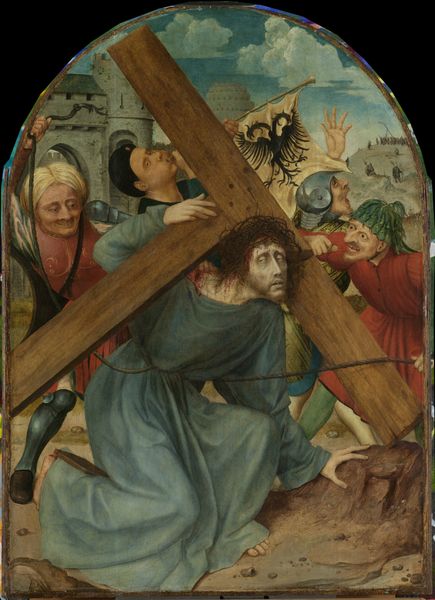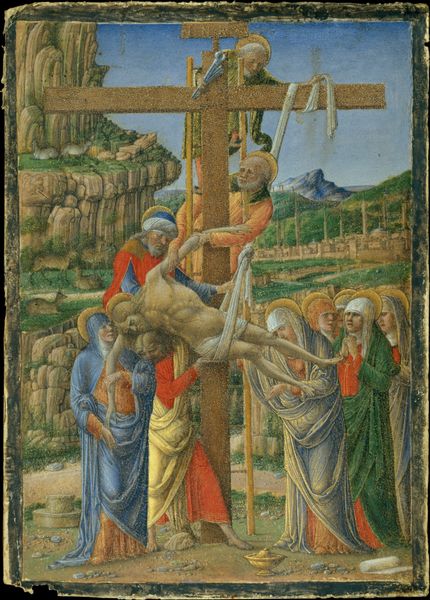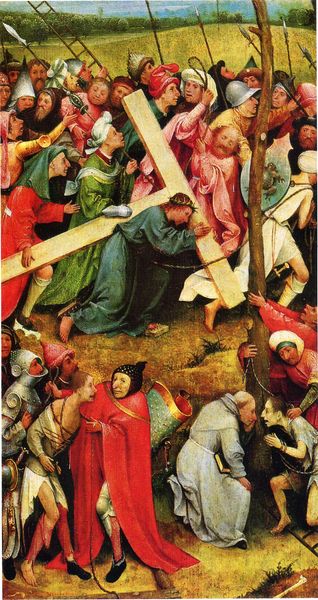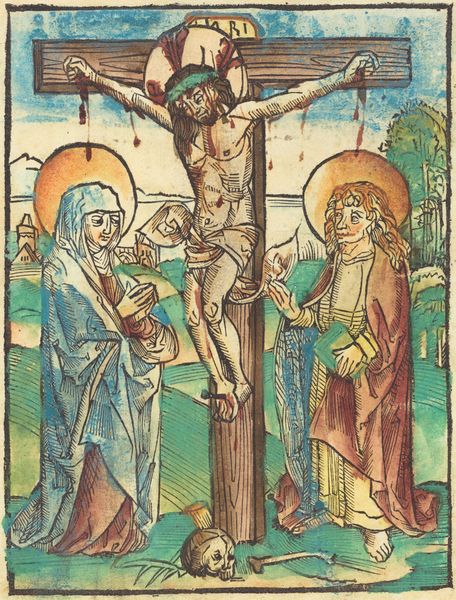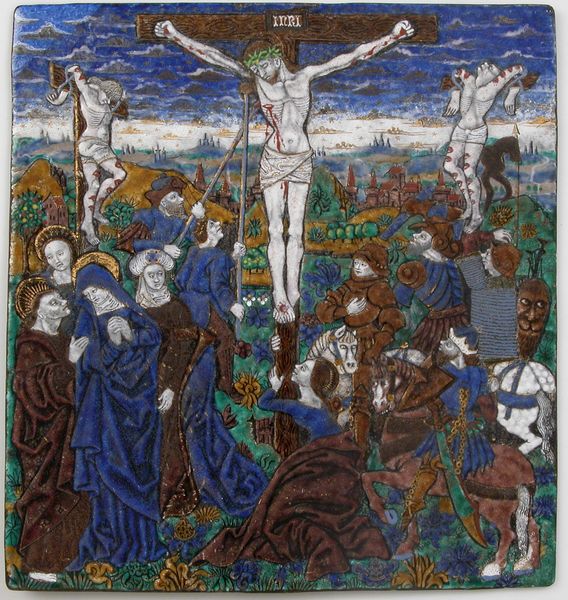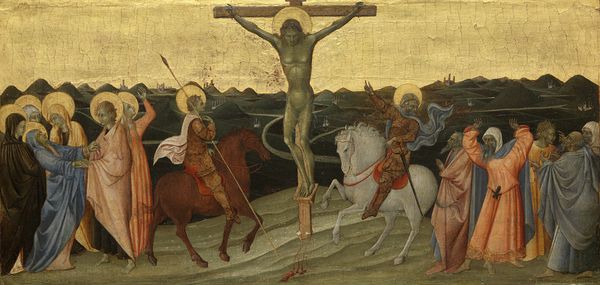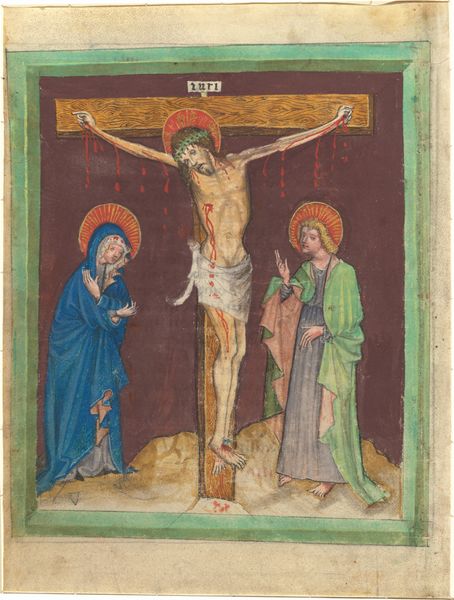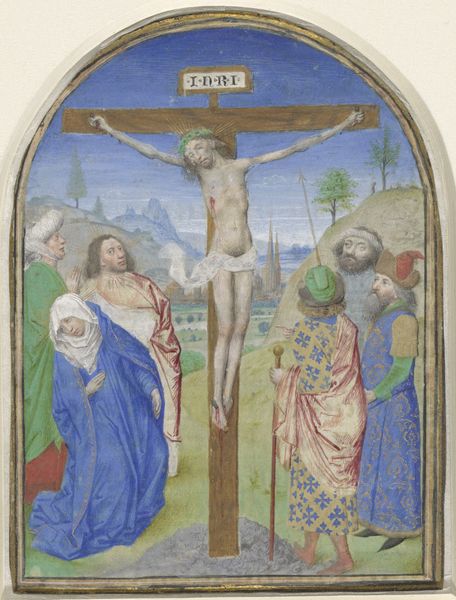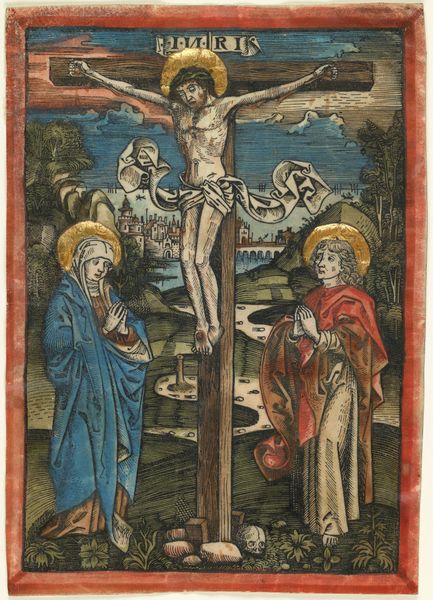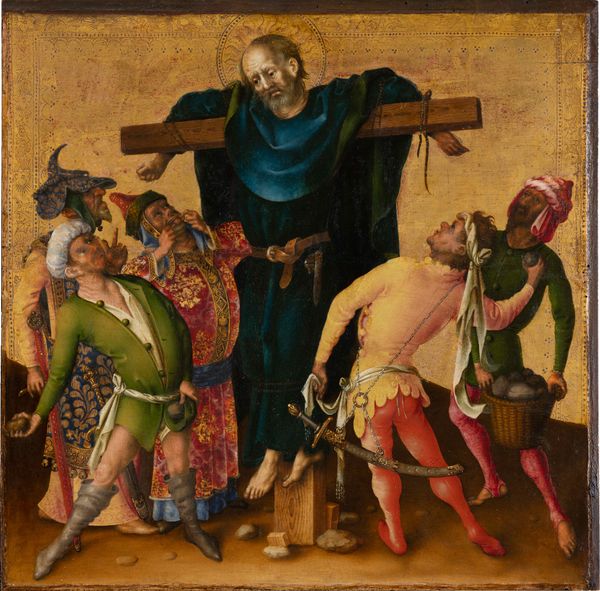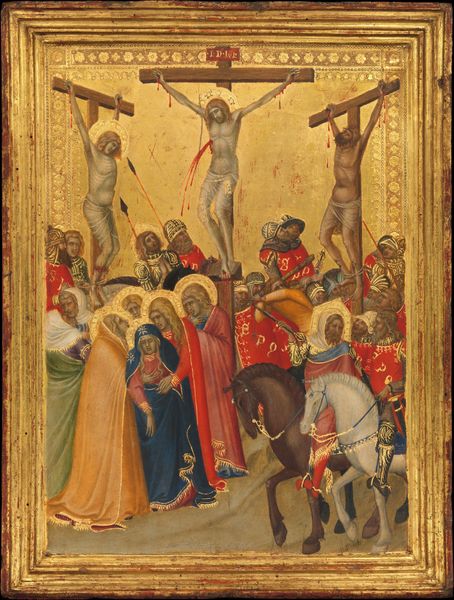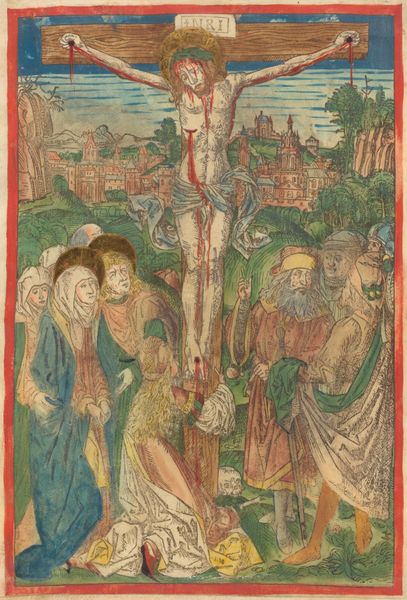
panel, tempera, painting
#
medieval
#
panel
#
narrative-art
#
tempera
#
painting
#
sculpture
#
figuration
#
oil painting
#
crucifixion
#
history-painting
#
international-gothic
#
mixed media
Dimensions: 20.0 x 18.0 x min. 1.7 cm
Copyright: Public Domain
Curator: Here we have an exquisite tempera and gold leaf on panel work, "Christ Being Nailed to the Cross," dating back to around 1400. It is attributed to an anonymous artist from the International Gothic period. What are your initial thoughts? Editor: Well, immediately the blunt physicality strikes me. The coarse wood, the hammered nails – there's a raw, unvarnished truth in its depiction of labor and suffering. The level of visible detail implies meticulous craftsmanship, an investment in the gruesome. Curator: That’s a powerful reading. I'm drawn to how the piece uses the iconography of the crucifixion as a mirror to its historical context: late medieval piety wrestling with socio-political anxieties and growing questions surrounding justice and power structures of the Church and state. The vulnerable position of Christ contrasts starkly with the armored figures of the Roman soldiers; it is an explicit commentary about oppressive rule. Editor: I see your point about the political subtext, but I'm also compelled by how the piece draws our attention to the instruments of torture, the labor involved in enacting this violence. Consider the textures; the smoothness of the gold background accentuates the coarseness of the wood and the bloody details of Christ’s body. How the creation and the act become disturbingly intertwined. Curator: It does challenge us to examine that complex relationship, doesn’t it? The international Gothic style, which favors flattened perspectives and stylized figures, allows for the narrative elements and emotional message to be very foregrounded. The figures arranged around the cross evoke various societal reactions: fear, pity, aggression. The act of the crucifixion, rather than its symbolic implications, seems to dominate. Editor: Right, and beyond the suffering, I'm fixated on what that physicality says about the means of artistic production at that time. The labor of grinding pigments, the patient layering of tempera, each meticulous detail contributes to a very embodied viewing experience that's intrinsically linked to manual processes. Curator: Agreed. I find this image an impactful portrayal of complex struggles around power and societal structures that are still visible and resonant in today's world. Editor: Indeed. Examining it from this angle underscores its powerful connection between making, meaning, and a critical, sensory engagement with materials.
Comments
No comments
Be the first to comment and join the conversation on the ultimate creative platform.
